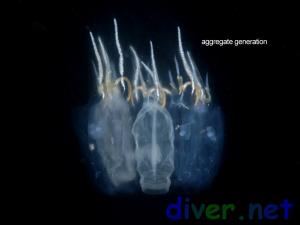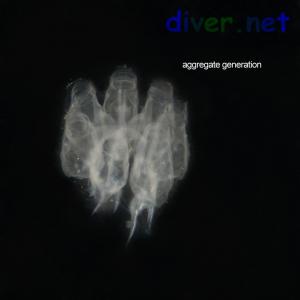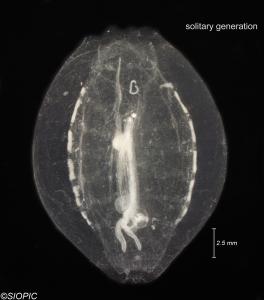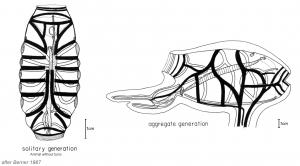Cyclosalpa bakeri
The aggregate generation has a characteristic intestinal loop, trailing testis, and caecum within posterior projections. The solitary generation is barrel-shaped with 3-5 light organs present on lateral sides running perpendicular to the horizontal body muscles.
The aggregate generation forms circular chains connected to one another, and possesses posterior projections.
Bone, Q. (1998) The biology of pelagic tunicates. Oxford University Press, Oxford.
Wrobel, D. and Mills, C. (1998) Pacific Coast pelagic invertebrates: a guide to the common gelatinous animals. Sea Challengers, Monterey Bay Aquarium, Monterey, CA.
Yount, J.L. (1954) The taxonomy of the Salpidae (Tunicata) of the central Pacific Ocean. Pacific Science 8: 276-330.





